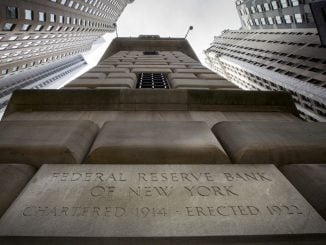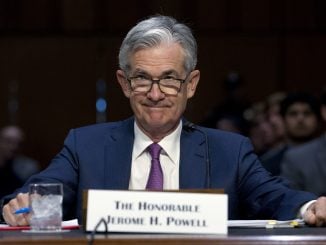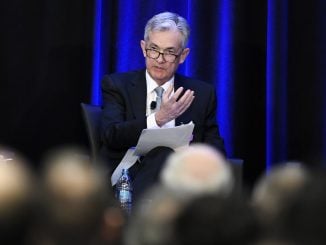
WASHINGTON, D.C. — Testifying to Congress this month, Federal Reserve Chair Jerome Powell sent a message seldom heard from his predecessors: That the Fed should consider the struggles of the lowest-income Americans in setting its interest-rate policies.
“We want to remind ourselves,” Powell said, “that prosperity isn’t experienced in all communities. Low- and moderate-income communities in many cases are just starting to feel the benefits of this expansion.”
It wasn’t the first time Powell had sounded that theme of late. At a news conference in July, he noted that pay had begun rising fastest for lower-skilled workers, a shift from earlier in the economic expansion.
“This underscores for us the importance of sustaining the expansion so that the strong job market reaches more of those left behind,” he said.
The notion that the Fed should try to sustain the expansion to help the most disadvantaged people might seem self-evident. But throughout its history, the Fed, whose mandate is to stabilize prices and maximize employment, has rarely expressed the need to suit its policies to benefit the least fortunate.
With the economy expanding for an 11th year and unemployment near a 50-year low, most of Powell’s predecessors would have focused on the threat of high inflation and the possibility of raising rates to forestall it. The prevailing belief has been that addressing economic inequality or poverty is the purview of Congress, not the Fed.
Powell still says the Fed’s main focus is the health of the job market and the stability of prices. But as he nears the end of his second year as chairman, he has increasingly opened the door to the idea that the Fed can also lift up those who still struggle years after an economic expansion has boosted the fortunes of most Americans.
One driver of that change is an outreach effort the Fed launched a year ago as part of a review of its financial tools and strategy. The outreach has included 14 meetings between Fed officials and representatives from labor unions, educators and community development groups. Many participants have told Fed officials that despite entrenched poverty in some areas of the country, more disadvantaged Americans are finally finding jobs and making economic progress.
On Monday, in a working-class neighborhood in East Hartford, Connecticut, Powell and Eric Rosengren, president of Boston Federal Reserve Bank, will visit a career development program and meet with residents to get a closer look at their challenges.
Back in August, at an annual gathering of central bankers in Jackson Hole, Wyoming, Powell began his speech by observing how the U.S. economic expansion — the longest on record — was finally benefiting working people, through higher pay and more plentiful job opportunities.
His speech took some economists by surprise.
“It is almost inconceivable that Powell’s predecessors would have begun an important talk on monetary policy this way,” Dean Baker, an economist at the progressive Center for Economic and Policy Research, later wrote in a column that called Powell a “Labor Day hero.”
“Powell has explicitly made the plight of the poor and working class part of the Fed’s agenda,” Baker wrote.
Janet Yellen, Powell’s immediate predecessor, had begun to raise these issues during her tenure. At the 2016 Jackson Hole conference, some of Yellen’s deputies met with members of “Fed Up,” an organization that advocates for low rates to support economic growth and hiring.
But Stephanie Aaronson, director of economic studies at the Brookings Institution and a former Fed economist, said Powell has linked Fed policy more explicitly to issues like inequality. Ben Bernanke, who preceded Yellen as Fed chair, spoke about economic inequality, but his stated remedies were in areas outside the Fed’s reach, like education and job training.
And in the past when Fed officials would meet with community groups, they tended to discuss issues that only indirectly help the economically disadvantaged — fairness in bank lending, for example.
The Fed’s current outreach “is actually about monetary policy — and that does make it really different from the usual types of interactions that the Fed has with community groups,” Aaronson said.
Aaronson co-authored research this spring that found that a persistently-low unemployment rate can significantly narrow employment gaps between whites and African-Americans and Latinos. Her research also found that the narrowing of that gap accelerated as unemployment fell further.
J.W. Mason, an assistant professor at John Jay College, said that Fed officials haven’t often acknowledged that their policies have varying consequences for different socioeconomic groups. Many economists have long argued, for example, that when the Fed raises rates to try to stop prices from accelerating, it risks hindering the kind of robust job market that disproportionately helps disadvantaged workers.
“It’s not just about the whole economy,” Mason said. “It’s about who’s benefiting. It’s always been true, but people didn’t want to acknowledge it.”
In some ways, Powell has more flexibility than most of his predecessors to keep rates low. Low inflation makes it easier to hold down borrowing costs. And the political environment has changed. Bernanke and Yellen were frequently criticized by Republicans in Congress for their low-rate policies. But with President Donald Trump regularly attacking Powell for not cutting rates faster, the chairman faces little pressure from Capitol Hill to reverse course.
David Wilcox, a senior fellow at the Peterson Institute for International Economics and a former top Fed staffer, noted that as Fed chairman, Alan Greenspan took a famous risk in the late 1990s: His belief was that an acceleration in worker productivity would allow him to keep rates low and let unemployment fall steeply. Most economists believe the risk paid off, as unemployment fell below 4% without spurring inflation.
But Greenspan “never articulated any particular concern about reaching into communities that had been previously hard hit,” Wilcox said. “That was not a part of Greenspan’s rhetoric.”



